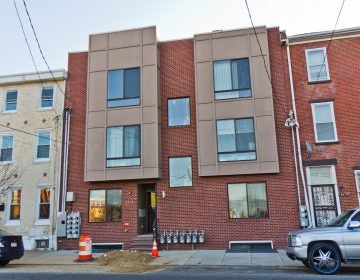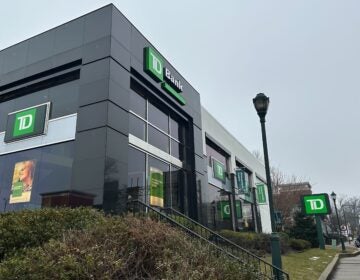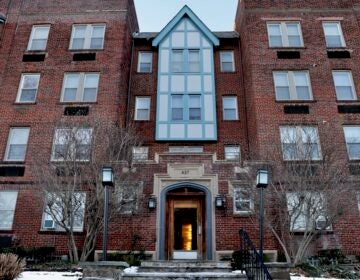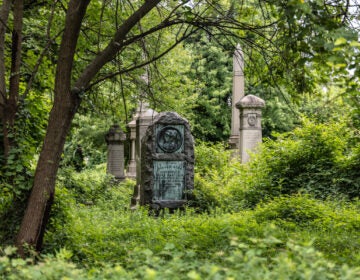A citywide survey is not enough. Philly needs a holistic approach to make historic preservation more equitable
A holistic approach is necessary for Philadelphia to create a more equitable historical preservation process, writes grassroots preservationist Dana Fedeli.
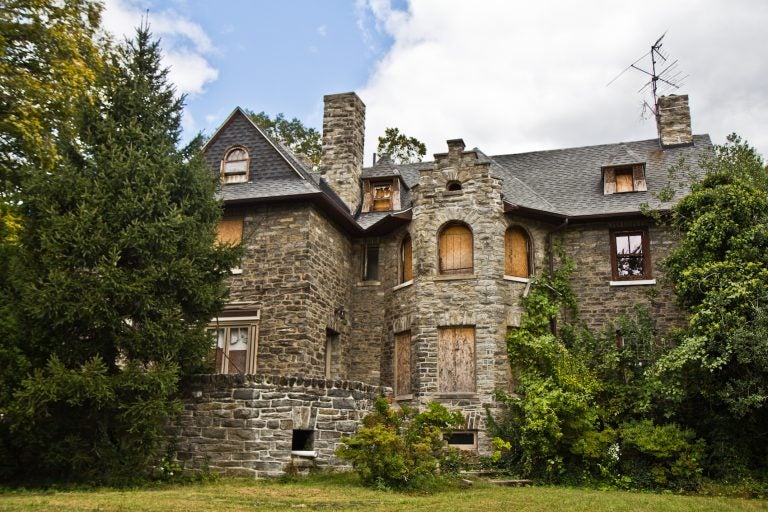
A historic home in need of repair on Upland Way in Overbrook. (Kimberly Paynter/WHYY)
Last week, the City of Philadelphia’s Department of Planning & Development (DPD), announced a call for proposals to coordinate a long-awaited citywide historic preservation survey. That survey, promised by Mayor Jim Kenney in response to years of advocacy, will evaluate Philadelphia’s architectural history. The coordinator sought in the RFP is expected to assist the Philadelphia Historical Commission in the initial planning phase of the survey, a project that finally will come to fruition on the recommendation of the mayor’s Historic Preservation Task Force.
The move toward surveying the city’s robust architectural history is welcome — especially given the preservation losses that have come with the city’s real estate boom.
But surveys alone are not an accomplishment, nor should they act as an isolated answer to demands to protect the city’s architectural legacy.
A survey only has power when used holistically to inform change. By combining it with legislative policies that promote commercial and nonprofit inclusivity, fiscal incentives, public involvement, the survey gains meaning. Such an archive must act as as a living document — as in, it should be updated over the years. If all of this happens, the city will be able to celebrate viable and successful civic initiative. Otherwise, we will have only more research, likely revealing things those of us on the ground in the city’s communities already know.
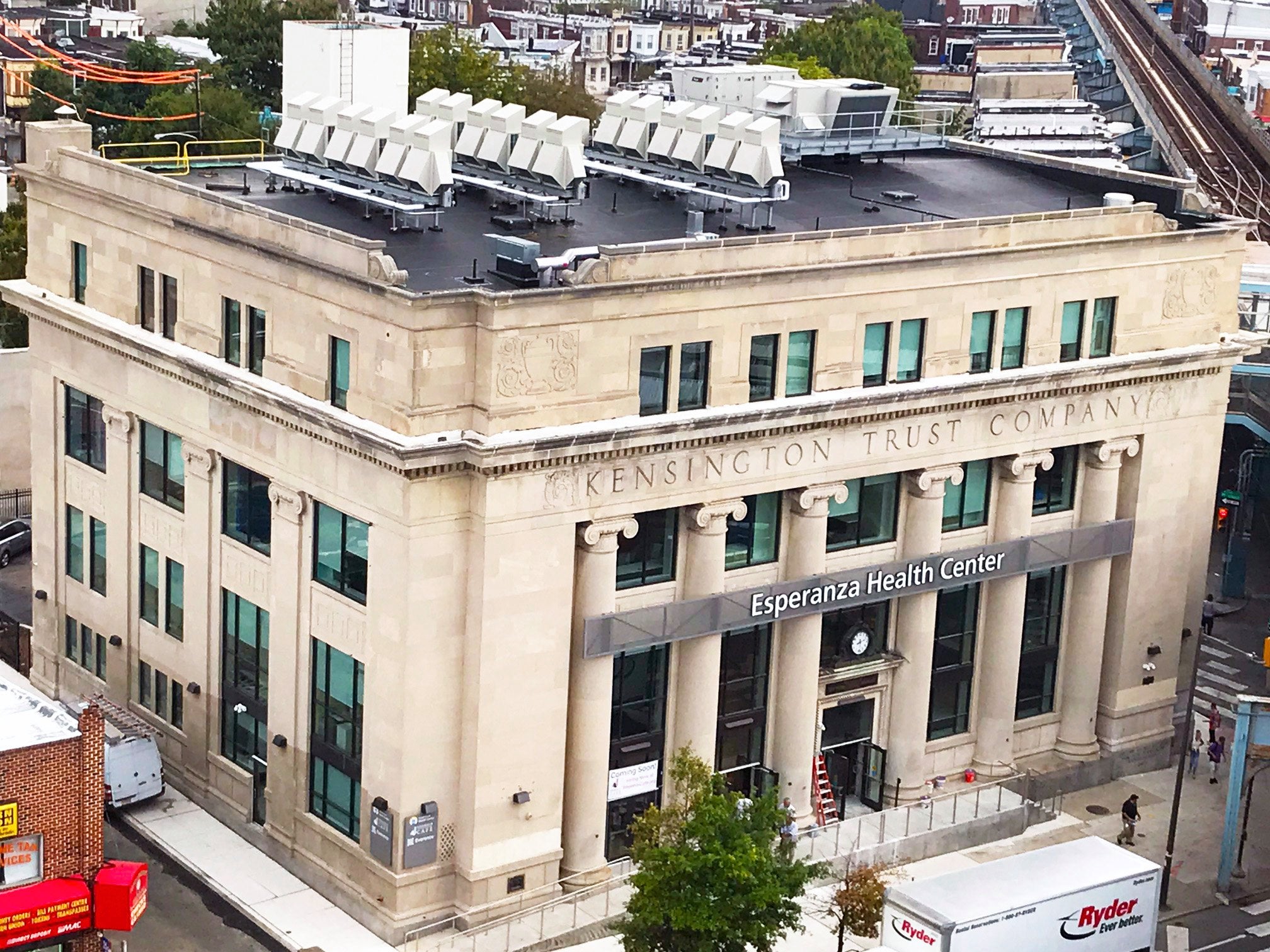
The prep work that will be done through the RFP out now must start the city on the right path. The DPD’s oversight of the project infers that planning policies and survey data could inform one another. This could offer tremendous opportunity. Or not. On a repeated basis, Philadelphia residents have witnessed the city provide developers with endless benefits and resources, while simultaneously regarding citizens as enemies and preservation efforts as opposition. Take the Historic Preservation Task Force website itself, for example. Citizens have noted that the task force’s “resources” section lists numerous resources for developers and small businesses, yet homeowners and nonprofits are barely provided with any agency.
The city often touts the Philadelphia Historical Commission (PHC) as the best option for the public to connect with its government on preservation issues, but have you ever attended a PHC hearing? The hostility the public faces by certain PHC commissioners amidst the pomp and circumstance is not exactly the warm and friendly citizen-focused opportunity that the city’s public relations team portrays. Generally speaking, Philadelphians have been treated as an inconvenience in the preservation and development process.
So what exactly is the driving ideology behind this survey?
Is it to highlight obvious white-glove landmarks or to finally consider working-class neighborhoods and marginalized communities whose histories have been cast aside as unimportant in comparison to white, male, hetero, wealthy narratives? Perhaps it will serve as the backbone to a very necessary and overdue tiered designation protocol many residents and preservationists have been fighting for over the years?
Or, is it really for historical purposes at all? Perhaps the survey is actually intended to identify properties in underfunded neighborhoods to take advantage of “opportunity zones” which will benefit developers under the guise of historic preservation?
With the high level of development-PTSD Philadelphia citizens are experiencing, it’s unsurprising that so many residents view this project with a great deal of skepticism, jumping to presume the latter. After all, the qualifications for the applicant does not require experience in historical or cultural resources.
Shouldn’t that be essential for the professional who will facilitate the groundwork for a historical preservation survey?
Additionally, the proposal is a significant undertaking on a shoestring budget with a short turnaround time — the job was announced on Aug. 27 with an application deadline of Sept. 15 and a budget of $12,000.

Subscribe to PlanPhilly
And despite all of this, Philadelphians are hopeful that this survey is a genuine and administratively supported project.
Philadelphians hope the project will be inclusive of racial and socioeconomic diversity by appreciating every neighborhood’s contributing built histories. Philadelphians are energized, and they want to be part of the process.
We want the city to accept and preserve working-class structures, plus all other aspects of our history, such as the 1930s garages reused by La Colombe in Fishtown, the Malcolm X house at North 25th and West Oxford streets, the site of the former Camac Baths, and nationally recognized women-led textile factories. We want loan and tax-incentive programs that help homeowners so that places like the Dox Thrash house or rare wooden homes in Fishtown won’t fall into further disrepair or be demolished in favor of ubiquitous, oversized, luxury housing.
If the mayor and the DPD want to truly democratize preservation and provide an enduring legacy, it starts with hiring a suitable facilitator to set the table for the survey and all that comes afterwards. It require a sincere, equitable, inclusive and transparent effort; a holistic approach; and meaningful, productive discussions. Anything less will be a performative measure to say promises were kept, while developers continue to benefit at the expense and safety of the public.
Editor’s Note: This op-ed was revised after initial publication on Sept. 3, 2020 and republished on Sept. 5, 2020.
Dana Fedeli is a Philadelphia resident and grassroots preservationist. Over the past four years, she has successfully overseen and championed a variety of preservation projects. Her work has been covered by PlanPhilly, Hidden City, The Philadelphia Inquirer, Philadelphia Weekly and more.
WHYY is your source for fact-based, in-depth journalism and information. As a nonprofit organization, we rely on financial support from readers like you. Please give today.



